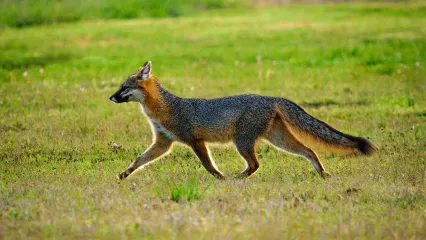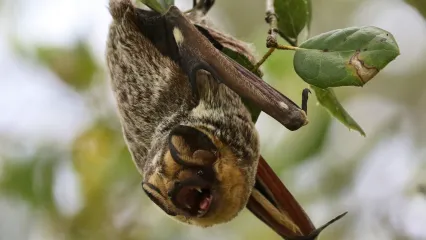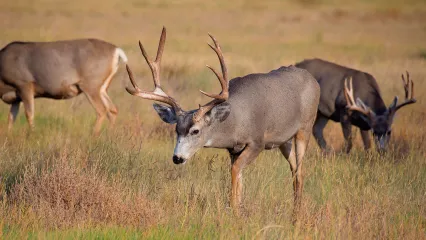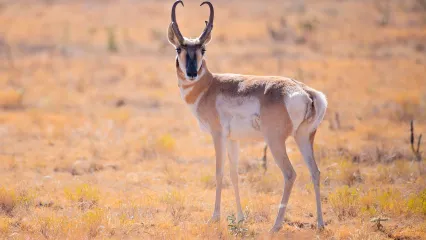
Description
Three species of foxes can be found in Oklahoma, and one of them is the gray fox. The others are the red fox and the swift fox. The gray fox can easily be confused with the red fox, but it can be distinguished by the patch of gray fur along the back and face. The gray fox also has reddish-brown fur on its sides with a long bushy tail that has a black stripe running along the top of it.
The gray fox is the only species of fox that can climb straight up a tree. They do this to escape predators, search for food, or find a place to relax. They have the ability to jump from branch to branch, and they use their long sharp claws to climb up and down the trunk.
Size
Adult male gray foxes can reach a weight up to 15 pounds, while the adult female will usually weigh about 8 pounds. The average lifespan of a gray fox in the wild is six to eight years.
Habitat
Gray foxes prefer to live in heavily wooded areas. Their coloring helps them easily blend in with their environment.
Life Cycle
The mating season for gray foxes is usually between January and April depending on climate and location. The male typically pairs with one female in its lifetime unless that female dies. The gestation period lasts an average of 53 days, and a litter will have up to seven kits. The female prepares a den and tends to the kits, while the male hunts for food. At about 3 months old, the kits are taken out of the den to be taught how to hunt. Within another month, they are able to hunt on their own. The den is then left until the next year, and the same male and female will come back together to produce and raise another litter. Gray foxes make their dens in crevices, caves, hollow logs, trees, or burrows in the ground.
Gray foxes are able to mate at 1 year of age. This can quickly lead to the population outgrowing the carrying capacity of the environment, resulting in loss of food, loss of habitat, and spreading of disease. To keep this from happening, the Oklahoma Department of Wildlife Conservation has included gray foxes in the furbearer trapping and hunting season from December through February.
How To Observe
Gray foxes can run at speeds up to 27 mph and can maintain that speed for quite some time; this helps them catch their prey. They eat various foods including rodents, birds, insects, fruit, nuts, and grass. During summer and fall, they will eat a lot of grasshoppers and crickets to supplement their diet.


